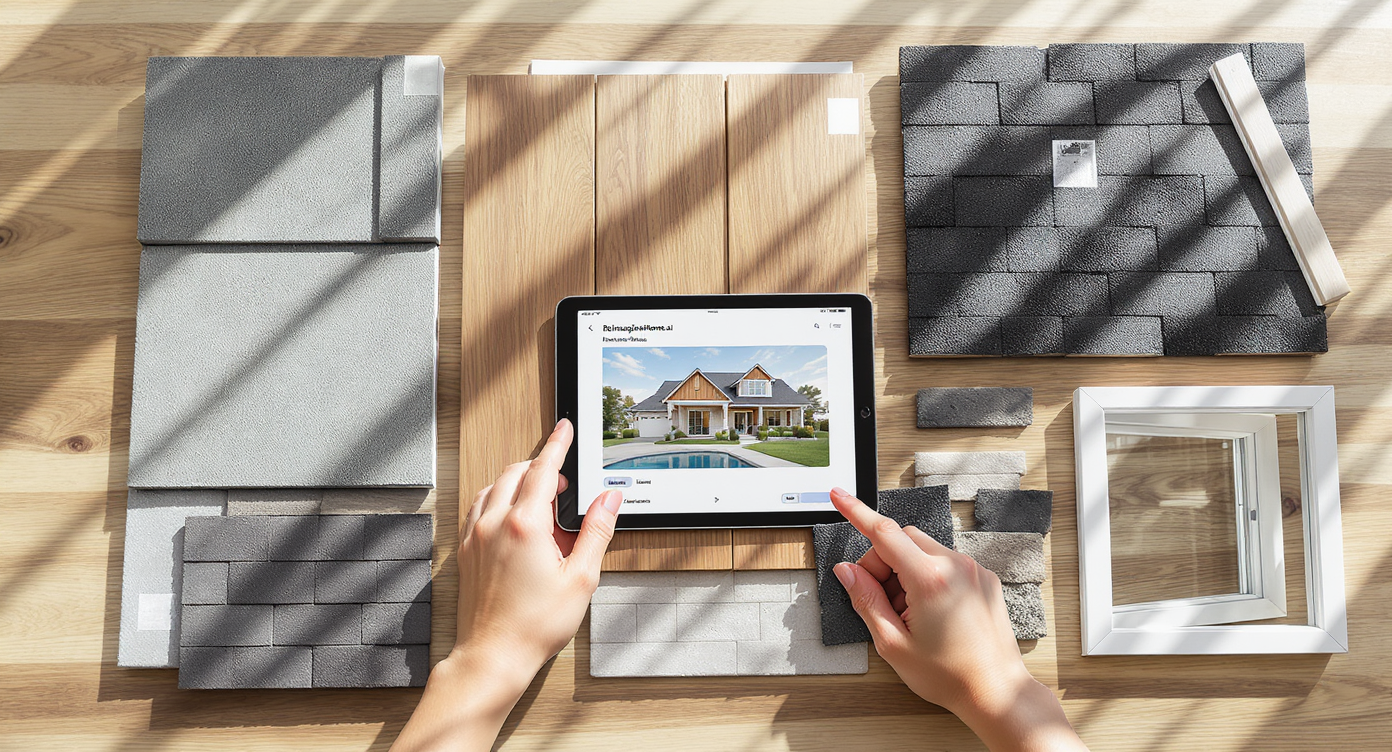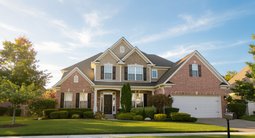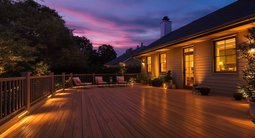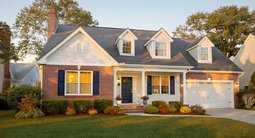TL;DR
Your climate should decide your exterior materials. Prioritize moisture and freeze–thaw defense in wet/cold zones, UV and heat reflection in hot-sun regions, wind ratings in storm belts, and corrosion resistance at the coast—then prototype 3–5 schemes in ReimagineHome.ai to align performance with curb appeal and budget.
The short answer

Start by visualizing your climate-smart design with material samples and AI mockups.
Pick exterior materials by climate, not just color: match products to your region’s temperature swings, moisture, UV, wind, and salt exposure. Do that first, and your siding, roof, windows, and hardscape will last longer, perform better, and cost less to maintain. Before you move a single ladder or place a materials order, upload a straight-on photo of your home to ReimagineHome.ai and test a few ideas safely. It’s the fastest way to see if that “perfect” dark roof is too heavy for a sunny climate, or if the cedar you love would be happier as a porch ceiling than full siding in a rainy zone.
Allocate 70% of your exterior budget to your top two climate stressors

Allocate budget wisely by choosing materials resilient to your top climate challenges.
At a glance - Moisture and freeze–thaw (wet/cold climates): Choose fiber-cement or masonry for siding, robust air/water barriers, ventilated rainscreens, and de-icing–friendly driveways; prioritize triple-pane windows and ice-dam prevention. - UV and heat (hot-sun climates): Favor cool roofs (high solar reflectance index), light finishes, stucco or fiber-cement, deep eaves, and Low-E glazing tuned to block solar gain. - Wind and storms (hurricane/tornado belts): Look for high wind ratings, impact-rated windows/doors, reinforced roof fastening, and continuous load paths. - Salt and spray (coastal): Specify corrosion-resistant fasteners/metals (stainless or coated aluminum), marine-grade hardware, and frequent rinse-friendly details. - Wild temperature swings (continental climates): Pick flexible coatings, ventilated assemblies, and materials with stable thermal movement. Designer’s note: Most exterior failures trace back to water management. If you fix drainage, flashing, and ventilation, nearly every material lasts longer. Micro moment: That driveway that looked pristine in October but heaved and cracked by March? That’s freeze–thaw plus poor base prep and trapped water talking.
Anecdote
The cedar looked gorgeous on install day—then the first wet season swelled the boards, the joints opened, and the south wall baked to a patchy fade. It wasn’t bad material; it was the wrong place for a wood diva without a rainscreen and shade.
Aim for U-factor ≤ 0.20 in cold zones and SHGC ≤ 0.30 in hot-sun regions

Choose windows with low U-factor and appropriate solar heat gain for optimal climate performance.
Windows & doors - Cold zones: Target window U-factor ≤ 0.20 and consider triple-pane; choose frames with thermal breaks; specify airtight operables (casement/awning) and high-performance weatherstripping. - Hot-sun zones: Aim for Solar Heat Gain Coefficient (SHGC) ≤ 0.30 on west/south exposures; add exterior shading; select spectrally selective Low-E to keep daylight without the heat. - All climates: Flashing beats caulk. Layer pan flashing, side/head flashing, then trim. Replace tired weatherstripping every 3–5 years. Roofing - Snow and ice: Use a cold roof strategy—vented attic/vented nail base—and an ice-and-water shield at eaves and valleys. Metal and architectural asphalt shed snow well; verify your roof’s snow-load rating. - Sun and heat: Choose a cool roof with high reflectance and high emissivity; light colors can trim attic temps significantly and ease HVAC loads. - Wind: Ask for tested wind uplift ratings and enhanced fastening patterns; hip roofs often perform better than gables in high winds. Siding & walls - Wet climates: Use a ventilated rainscreen (3/8–¾ in. gap) behind siding; fiber-cement, brick, or masonry veneers resist rot and insects. Seal end-cuts, not just faces. - Dry/hot climates: High-mass walls (stucco over masonry, AAC block) help temper daily swings; deep overhangs protect openings. - Coastal: Pick stainless fasteners and marine-grade hardware; avoid raw steel and uncoated standard fasteners near salt air. Paints & coatings - Expect repaint cycles to shorten by 20–30% on south/west facades. Choose high-quality acrylic latex with UV inhibitors; add mildewcide in damp zones; stick to lighter colors in hot regions to reduce heat absorption. Planning help: For cost ranges and scope sequencing, see a step-by-step plan to budget for siding, roofing, and windows. It breaks down what to do first, and what to phase if funds are tight.
Design for drainage first: target a 2% slope (¼ in. per foot) away from the house

Design hardscapes with proper slope to ensure effective water drainage away from your home.
Driveways, walkways, and patios - Base & slope: Build on a well-compacted base and slope paving at 2% away from the house to keep water moving. - Freeze–thaw regions: Use air-entrained concrete with proper joints and a breathable sealer; avoid harsh salts (choose calcium magnesium acetate or sand) to minimize surface spalling. - Hot zones: Dark pavements melt snow faster in winter climates but can create heat islands; consider lighter aggregates or permeable pavers to cool surfaces and reduce runoff. - Snow removal: If you plow, choose materials and edge details that tolerate blade contact (thicker pavers, chamfered edges, robust borders). Landscaping assists - Grade soil to drop 6 in. within the first 10 ft. from the foundation where feasible; add swales or French drains as needed. - Plant windbreaks (evergreens) and deciduous shade strategically to ease heating and cooling loads without risking storm damage. Lighting and hardware - Select marine-grade, powder-coated, or stainless fixtures within a few miles of salt water; in humid zones, look for sealed housings and gaskets rated for wet locations.
Prototype 3–5 exterior schemes before ordering materials

Prototype multiple exterior schemes digitally to visualize choices before buying materials.
Why prototype with AI - Visual clarity: Generate 10–20 renderings in minutes—light roof vs. dark, fiber-cement vs. stucco, brick base vs. full cladding—so you can compare aesthetics and heat/maintenance implications side by side in ReimagineHome.ai. - Performance cues: Use the design session to nudge choices toward climate-smart specs (e.g., lighter roofs in hot sun, rainscreen details in wet climates). - Budget sanity: Lock materials after you’ve seen them on your actual facade. Then price with confidence using clear budgeting steps for exterior work. Style still matters. If you’re weighing palettes and profiles, skim our 2025 exterior design trends guide to see which colors and window styles feel current—then adapt them to your climate. DIY-friendly checks before you order - Hose test: After a rain, walk the perimeter and note where water lingers—fix slope there first. - Sun map: Take photos at 10am/2pm in summer to see glare and hot spots—add shade or pick lower-SHGC glazing accordingly. - Hardware audit: Magnet + salt air = trouble. If a magnet sticks to “stainless” outside, upgrade to true marine-grade fasteners.
Visualization Scenario
Upload a straight-on photo of your facade into ReimagineHome.ai. Generate variants: 1) light cool-roof + fiber-cement lap with a stone base; 2) standing-seam metal roof + stucco; 3) coastal set with shingle-style siding and stainless fixtures. Toggle window glass tints and trim colors. Shortlist the two that look best, then adjust for climate—pick the higher-SHGC glass only on north elevations, swap to marine hardware if you’re coastal, and keep the rainscreen detail across versions.
Climate-and-materials: quick answers
Q: What siding is best for humid climates? A: Fiber-cement and masonry veneers perform well with a ventilated rainscreen gap and robust flashing. Natural wood can work in smaller, well-protected applications if meticulously detailed and maintained. Q: Do dark roofs overheat houses? A: In hot-sun regions, dark roofs can raise attic temperatures noticeably; a high-reflectance “cool roof” in a lighter color eases cooling loads. In snow country, darker roofs can help with melt but still prioritize ventilation and ice-dam control. Q: Triple-pane or double-pane windows? A: In cold zones, triple-pane often improves comfort and reduces drafts and condensation risk; in milder climates, high-quality double-pane with the right Low-E and airtight installation may suffice. Q: What fasteners should I use near the coast? A: Specify stainless steel (316 where possible) or marine-grade coated fasteners and hardware, and rinse salt-laden surfaces periodically to slow corrosion. Q: Can I mix materials? A: Yes—use the tougher, lower-maintenance material on the weather-facing elevations and the feature material (wood, stone accents) where it’s protected. Prototype combinations in ReimagineHome.ai to balance durability and character. Image and alt-text suggestions 1) Alt text: Front elevation showing fiber-cement lap siding with a ventilated rainscreen and light “cool roof” shingles in a sunny climate. Caption: Light, reflective roofing and ventilated cladding help hot-sun homes run cooler without sacrificing curb appeal. 2) Alt text: Close-up of properly flashed triple-pane casement window with head, sill pan, and side flashings. Caption: Flashing beats caulk—layered protection keeps water out in every climate. 3) Alt text: Driveway and walkway with 2% slope away from house and permeable pavers at the apron. Caption: Drainage first: a modest slope and permeable zones prevent freeze–thaw damage and ponding.
Build for your weather, then for your wishlist
A home that works with its climate outlasts one that fights it. Start with your top two weather stressors, spend most of your budget solving those, and let color, texture, and trim follow. Then confirm the look before you commit—your curb appeal and maintenance line item will both thank you. Ready to see how climate-smart choices actually look on your place? Upload a photo to ReimagineHome.ai, try a few palettes and materials, and lock a scheme that’s resilient, beautiful, and within budget.
.svg)

.svg)














.png)